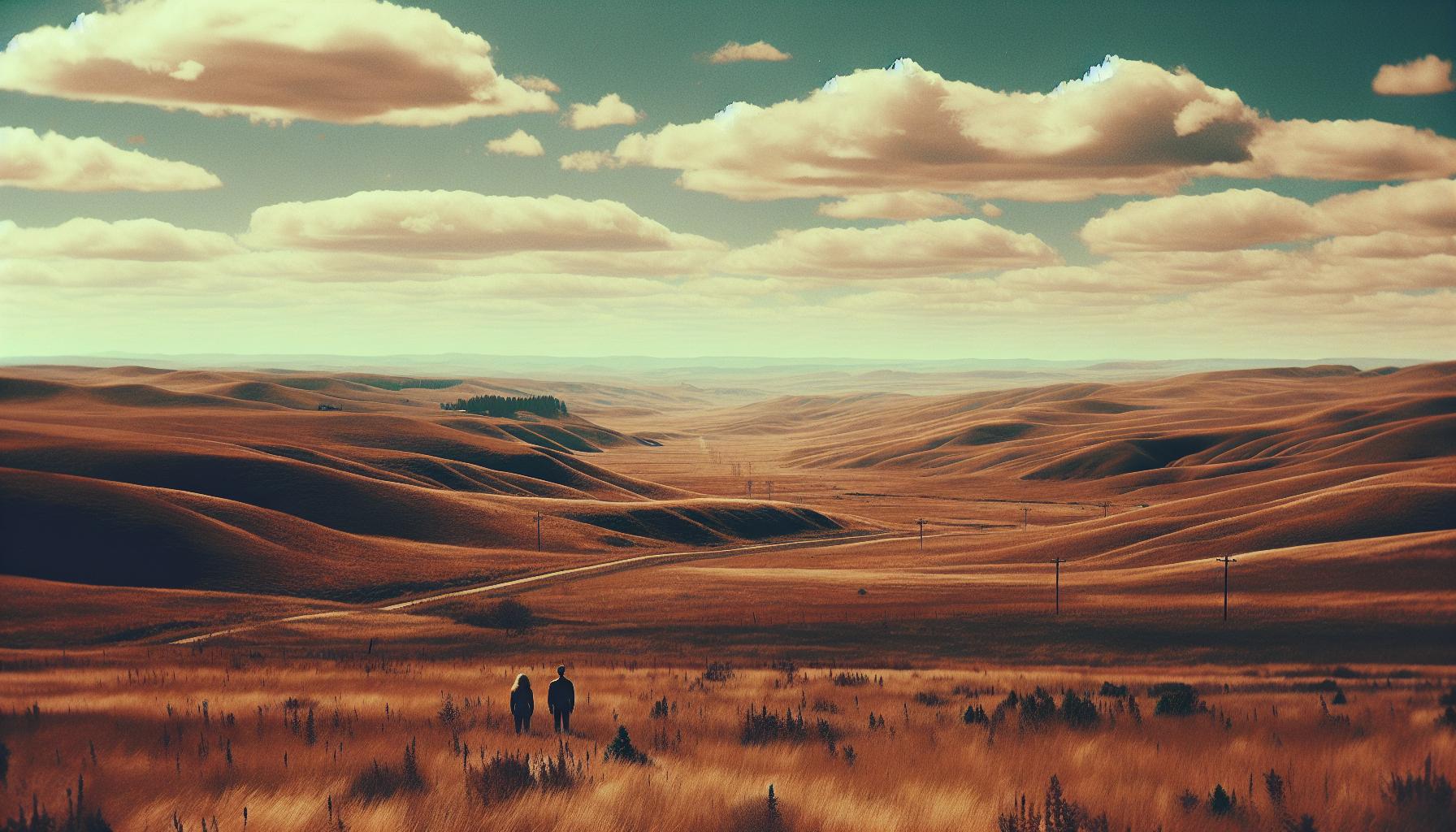Set against the breathtaking backdrop of the American West, Brokeback Mountain is more than just a love story; it’s a poignant exploration of time, place, and the complexities of human relationships. But when exactly does this iconic tale unfold? If you’ve ever wondered how the rugged landscapes and shifting seasons reflect the characters’ tumultuous journey, you’re in for a treat.
The film spans several decades, capturing the essence of changing social norms and personal struggles. It’s not just a cowboy romance; it’s a deep dive into the heart of a society grappling with love and identity. So saddle up and join the ride as we unravel the timeline of Brokeback Mountain and discover how its historical context shapes the narrative in ways you might not expect.

When Does Brokeback Mountain Take Place
“Brokeback Mountain” unfolds against the backdrop of the American West during the 1960s through the 1980s. This time period serves as a critical element, shaping the cultural and societal views on love and identity. The film’s narrative begins in 1963, capturing the initial bond formed between Ennis Del Mar and Jack Twist while herding sheep on Brokeback Mountain.
Years pass as the story progresses, illustrating the characters’ lives, marriages, and internal conflicts. Each decade introduces evolving norms and pressures that complicate their relationship. By the time the 1980s roll around, significant shifts in societal attitudes start to emerge, though the struggles of Ennis and Jack remain profoundly affected by the earlier decades.
The stunning landscapes of Wyoming and Texas enhance the emotional weight of the narrative. As seasons change, they symbolize the characters’ longing and unresolved desires. Each location showcases distinct scenes that reflect personal struggles intertwined with broader societal challenges.
Cinematic elements, such as dialogue and music, further underline the time’s influence on the characters. Audiences witness how external factors shape their decisions and emotional journeys. Through its layered storytelling, “Brokeback Mountain” artfully highlights the complexities of love amid the constraints of a particular era.
Time Period of the Story

The timeline of “Brokeback Mountain” spans from 1963 to the 1980s. This period profoundly impacts the characters’ experiences and relationships.
Historical Context
During this era, societal norms regarding sexuality remained rigid, particularly in rural America. Homosexual relationships faced widespread stigma, resulting in severe repercussions for those who dared to express their identities. The film’s setting reflects these social attitudes through the lives of Ennis and Jack. Despite their deep bond, both men grapple with fear and insecurity shaped by their environment. The backdrop of historical events like the sexual revolution adds complexity to their struggles. Each decade brings new challenges that directly influence the characters’ decisions and emotional struggles, showcasing the tension between love and societal expectations.
Cultural Significance
Cultural shifts during the timeline also play a vital role in “Brokeback Mountain.” The increasing visibility of LGBTQ+ rights in later decades starkly contrasts with earlier societal attitudes. This evolution informs viewers’ understanding of the characters’ struggles. While the early years highlight secrecy and repression, later developments symbolize a gradual change toward acceptance and recognition. Landmark events, such as the Stonewall riots, serve as crucial turning points in the broader narrative of LGBTQ+ rights. By framing the story within this historical context, the film elevates the discourse around love and identity, pushing societal boundaries.
Setting and Location

The setting of “Brokeback Mountain” significantly enhances its narrative depth. This film intertwines the lives of Ennis Del Mar and Jack Twist with the rugged American West.
Ennis and Jack’s Lives
Ennis and Jack’s lives unfold primarily in the 1960s through the 1980s. Their initial connection occurs while herding sheep on Brokeback Mountain in 1963. This secluded location symbolizes their profound bond, which ultimately faces societal pressures. While Ennis later marries and struggles with traditional expectations, Jack seeks a more liberated existence. Their relationships exemplify the tension between personal longing and societal norms. The character arcs progress as they navigate love in an era of repressive attitudes toward homosexuality. Each decade intensifies their conflict, reflecting broader transformations in cultural acceptance.

Landscape and Environment
The diverse landscapes mirror the emotional turbulence of Ennis and Jack’s relationship. Wyoming’s striking mountains provide a backdrop for their initial romance, embodying both freedom and isolation. The rugged terrain represents the harsh realities they face. Texas introduces vast plains that contrast sharply with the intimacy of Brokeback Mountain, highlighting the shift in their lives. Natural elements enhance the film’s themes of longing and unfulfilled desires. Seasonal changes further reflect the passage of time, paralleling the struggles within their relationship. Overall, the environment serves as a powerful narrative device, deeply entwined with the characters’ journeys.
Impact of Time on the Narrative

The timeline of “Brokeback Mountain” profoundly influences its narrative and character development. The decades from 1963 to the 1980s showcase Ennis Del Mar and Jack Twist’s evolving relationship amid shifting societal landscapes.
Relationships Across Time
Relationships in “Brokeback Mountain” illustrate the impact of time on emotional connections. Ennis and Jack’s bond begins in an isolated setting, symbolizing unrestrained love. As their lives progress, societal expectations reshape their interactions. Ennis struggles with traditional roles and fears, while Jack grapples with the desire for a deeper connection. The passage of time reveals complexities that challenge their relationship’s survival. Each decade introduces new emotional weights, emphasizing their longing for connection while fraught with societal pressures. Time captures their growing discontent, highlighting the painful reality of unfulfilled dreams.
Changes in Society
Societal changes from the 1960s to the 1980s considerably influence the characters’ experiences. In the early years, rigid norms dictate how individuals navigate their identities. Ennis and Jack face stigma and secrecy in their love, struggling against the constraints of rural America. As time progresses, the cultural landscape starts to shift, gradually increasing visibility for LGBTQ+ rights. Landmark events reshape perspectives, contrasting their earlier fears with newfound hope. This evolving backdrop adds depth to the narrative, reflecting the complex interplay of love and identity. Social transformations underscore the challenges faced by the characters, inviting audiences to consider broader implications of love during tumultuous times.

Emotional Journey
“Brokeback Mountain” unfolds across the transformative decades from 1963 to the 1980s. This timeline not only showcases the evolution of Ennis and Jack’s relationship but also mirrors the shifting societal attitudes toward love and identity. The stunning landscapes of the American West serve as a backdrop for their emotional journey, enhancing the film’s exploration of longing and societal constraints.
As viewers reflect on the characters’ struggles against a backdrop of rigid norms and evolving cultural landscapes, they gain insight into the complexities of love in a challenging era. The film remains a poignant reminder of the personal battles faced by many, inviting audiences to engage with its themes of love, identity, and the impact of time on human connection.



